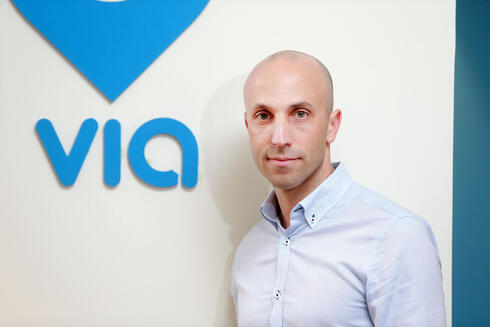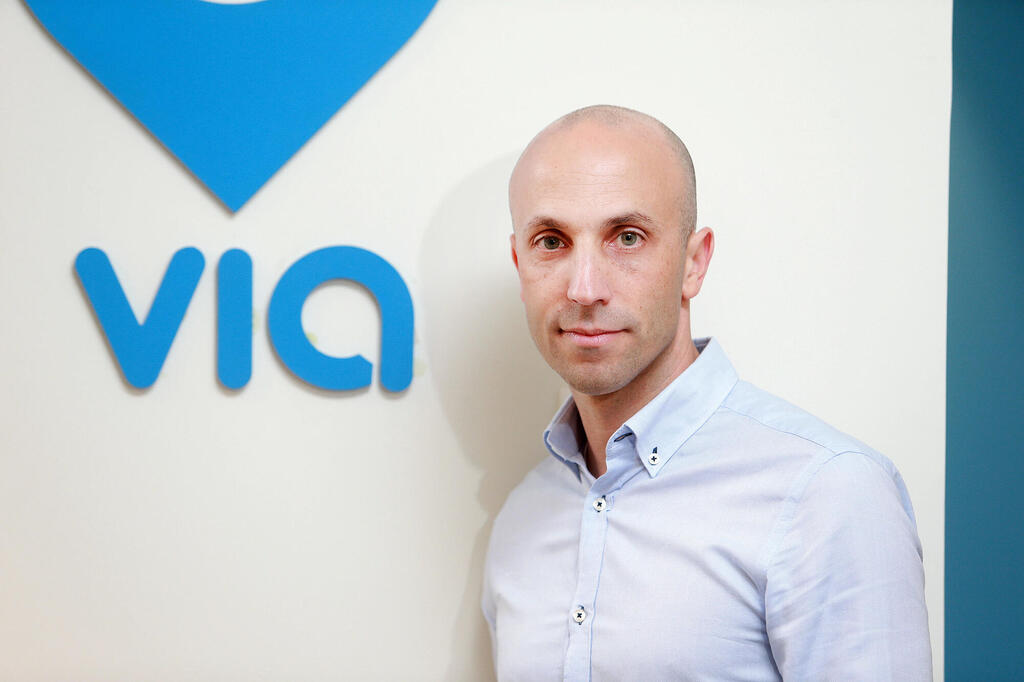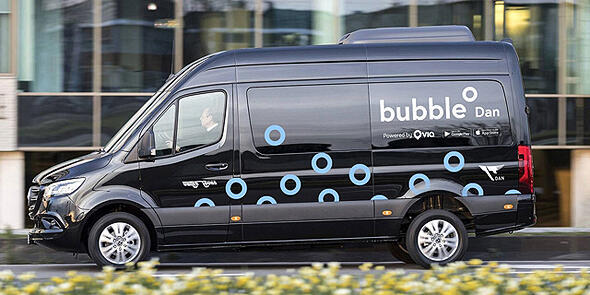
Via CEO: "Bubble is efficient and successful. The Ministry of Transportation’s data shows only a partial picture"
Daniel Ramot, whose company supplies the software system for the cooperative transportation service Bubble, criticizes the Ministry of Transportation's decision to terminate the service
When you look at the data distributed by the Ministry of Transportation, you get the impression that Bubble’s activity in Tel Aviv was a complete failure. The average daily number of passengers dropped from 7,000 to 4,300, and the vehicles are almost ghost vehicles, with an average of 2.15 people during peak hours. What else can be done besides closing them and declaring the experiment a failure? This is really what the ministry did, when it announced this month that at the end of the year the activities of Bubble, which is operated by Dan and Via, which provides the software system, as well as the Jerusalem service TikTak, which is operated by Egged and Via, will be stopped.
But numbers show only part of the picture, and depending on how you look at them, not necessarily the right picture either. Because when the CEO of Via Daniel Ramot looks at these data, he does not see a shameful failure but a clear success. "Is Bubble successful? Unquestionably, it succeeds in doing what it was designed for - to fill holes in the existing bus system," Ramot says in an interview with Calcalist. "In the situation Tel Aviv is in today, this is the best way to expand public transportation and give more people a way to get around the city other than by private vehicles.”
In the conversation, Ramot explained why the way the Ministry of Transportation presents the use of the service is fundamentally wrong. "Dynamic public transport has several use cases in the world," he said. "First, to bring people to public transportation centers such as train stations and large bus stations. A second use is to replace inefficient bus lines. We do this in dozens of places in the U.S. There are thousands of lines that no one travels on and with the same budget you can serve a much larger amount of passengers. The third use is to complement an existing public transportation system. Tel Aviv has a very good bus system. But even in Manhattan with one of the best systems in the world, there are trips that the chain doesn't serve well. For example, to get from east Ramat Gan to certain places in Tel Aviv you don't have a very good bus. You have to change two lines, change three lines, walk half a kilometer or a kilometer to the station. You will not make this trip by bus."
According to Ramot, "dynamic public transportation like Bubble comes to fill this need, to fill the holes in the grid. And it does this in an excellent way. Most of the trips in Bubble, according to our information, have no logical substitute in public transportation. According to our estimate, 40% of passengers traveling with Bubble would otherwise be traveling by private car. That's thousands of vehicles being taken off the road."
Ramot also believes that the Ministry of Transportation's figures do not represent the situation correctly: "Today we have over 5,000 trips a day. It was 7,000, but in April they raised the price a lot so temporarily it dropped to 4,000. Now it is back to 5,000, and it will continue to rise and will reach back to 7,000. At the peak, with 7,000 passengers a day and with 40% giving up driving a private car, that's 2,800 fewer trips in a private car. And it's not just travel: a private car also needs parking, so it travels many more kilometers than a Bubble car. Compared to taxis, the occupancy factor of a vehicle in Bubble on average replaces five taxis. This takes a lot of vehicles off the road."
What about the figure that during peak hours there is an average occupancy of 2.15 passengers?
"Over two is not such a bad number. A Bubble vehicle is used for travel to work and from work. It takes passengers into Tel Aviv, and then has to go back to pick up more passengers. There is a direction of travel where the vehicle is empty, because it goes out and then comes back. This is part of the dynamic. In my eyes, that's not a bad number. On average, four or five passengers travel in a Bubble vehicle in an hour. It's not bad at all. That's five people you picked up, took them together to some destination and saved five vehicles. Is this an inefficient service? So when you compare Bubble to the average buses in Tel Aviv , it is clear that it transports fewer people per hour and its cost is higher. But when compared to the least efficient buses, it is more efficient."
Another interesting figure concerns the type of travel that is carried out in Bubble. According to Via, 73% of trips in Bubble have no substitute in buses that do not involve a very significant increase in travel time (the comparison was made between actual travel time with Bubble and predicted travel time in travel planning applications such as Google Maps, which is often optimistic in relation to the actual bus ride). "These are trips that do not have a reasonable alternative route in public transportation," Ramot said. "And if you look at areas outside the city center, the figure rises to 85%."
Ramot believes that in the end everything depends on expectations, how the data are presented and to what they are compared. "The question is, do you succeed in expanding access to people who previously did not have a good public transportation solution? Do you succeed in taking vehicles off the road? Bubble is more efficient than the least efficient buses, you take vehicles off the road and give a solution to people who previously did not have one. I think the service is very successful. I believe that the service will not be closed and that it is very important."
Following the Ministry of Transportation's announcement, it is claimed that your dynamic public transportation model has failed, and that the company is in trouble.
"Via will record this year over $170 million in sales of software and services to customers such as public transport operators, local authorities, public transport authorities, and companies such as Google and LinkedIn. We sell our solution to Harvard University, Columbia University, Dubai, Paris, London. We have 650 deals with more than 500 different customers. The company grew over 80% this year compared to last year and will continue to grow at this rate. We have over 1,000 employees, and a new customer is added almost every business day. I believe this is an Israeli success story. Via invented a new category of dynamic public transportation, and we have gone global. This is the story of Via."
On the other hand, you closed your service in New York a year ago.
"The vision from the beginning was to do what we are doing today: to develop software for a dynamic public transportation system, to use data to determine routes. When we started in 2012, no one wanted to talk to us, they said it was nonsense, that it would never work, that it was a taxi. We didn't want to give up, we said we would prove ourselves that it could work. So we launched the service in New York. I think it was very successful. In 2018 we had enough data and the product was mature enough to convince the city of Austin, Texas to take our software and use it. It worked very well, and they helped us enter additional U.S. cities and 37 other countries, including Saudi Arabia, Japan, New Zealand and Brazil. In 2018 we had $11 million in revenue, and today it is more than $170 million."
Ramot adds that "the service in New York achieved its goal, and we were able to return to the original vision. But then the pandemic came and the city forbade shared trips in small vehicles and we had to provide a service like taxis, like Uber. This is not our business, Uber is much better at this than us. For two years we had to compete with Uber directly. This was not our focus and the service declined greatly. When it came time to decide whether to go back and reinvest in marketing and advertising to bring people back to the service, we saw that the business of the software had grown so much that it no longer made sense. The service In New York fulfilled its purpose, and with much regret we closed it."















